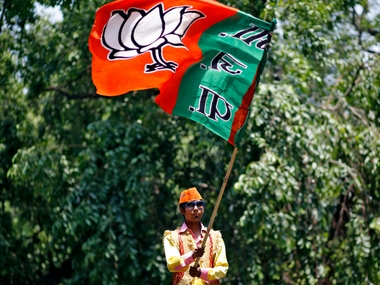Is the urban legend of the BJP’s invincibility dying? Results of at least three elections — Gorakhpur, Ajmer and Alwar — suggest the urban base of the party that provided BJP the ballast in every election since 2013 could either be turning away or getting disinterested in voting. Combined with visible symptoms of dissatisfaction with the government in rural areas, the urban apathy is a warning sign for the BJP. In by-elections for Gorakhpur and Phulpur, the BJP was expected to race away to big leads in the urban segments of the constituency. But the voter turnout in urban Assembly segments like Allahabad North (21.65 percent) and Allahabad West (31 percent) of Phulpur, and Gorakhpur City (33 percent) was much lower than in rural segments. This ensured that the BJP could never make up for the losses in rural segments of these constituencies, where it trailed by huge margins. [caption id=“attachment_4381447” align=“alignleft” width=“380”] Representational image. Reuters[/caption] In Gorakhpur city alone, the BJP was hoping that it would establish an unassailable lead of a lakh plus votes, something that had happened in the previous elections. So, the party poured in most of its resources to ensure a big turnout of voters in the city. But this didn’t happen. In Alwar and Ajmer, where the BJP was trounced in bypolls held in February 2017, the party trailed by big margins in Ajmer’s two urban segments and Alwar town. In both these constituencies, it had opened up huge leads in the urban segments in 2014. The BJP’s victory in Gujarat had shown that it can win an election solely by holding on to its urban base. In the 2017 elections, the BJP had swept Surat, Ahmedabad, Baroda and Rajkot. Out of the 55 urban seats, it won 44 in 2017. Though the Congress won 68 of the 127 rural and semi-urban seats, its gains were neutralised by the BJP’s strong performance in the big cities. The old model, where the urban voter neutralised any anti-BJP bias of the rural segments, gave the BJP a cushion. It gave it the confidence of entering a poll with the urban seats in its back pocket.
But the new trend shows the BJP can no longer start with a guaranteed urban bonus.
Many factors contributed to the BJP’s ascendancy in cities. Communal polarisation works more in urban areas than in villages, where caste is the deciding factor. Also, the BJP’s core voters — upper castes, youth, traders and government employees — live in cities. If the BJP is now trailing even in cities, obviously the core voter is unhappy. It is either voting for the BJP’s rivals or staying home on polling day, like in Phulpur and Gorakhpur. Many factors could have contributed to this apathy and opposition. Businesses in cities were hit by demonetisation and problems during the early months of GST. This may have affected the trader and the workforce in the unorganised sector. Youth may have turned away because of the government’s inability to generate jobs. And communal polarisation may no longer be paying electoral dividend. The problem for the BJP is that there is already growing discontent in rural areas. This was evident in Gujarat, where the Congress made huge gains in villages. The trend was underlined again in bypolls in Madhya Pradesh and Rajasthan where the BJP trailed in all the 14 Assembly rural segments where bypolls were held. Apart from the election results, the recent protests by farmers in Maharashtra and Rajasthan show that there is anger brewing in the Indian heartland. The BJP should be worried its voter in the city is no longer willing to go against the mood of his rural counterpart. The urban-rural divide might be falling on the BJP’s prospects in 2019.


)
)
)
)
)
)
)
)
)



